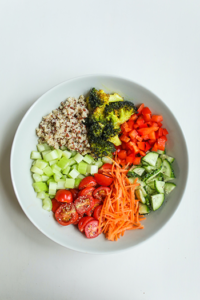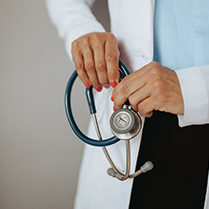
The DASH diet is a dietary approach to managing high blood pressure. DASH stands for "dietary approaches to stopping hypertension," precisely as it sounds. The DASH diet is prescribed to patients with high blood pressure; however, it is a generally healthy plan for anyone to follow.
Understanding Hypertension
Hypertension is the medical term for abnormally high blood pressure—the force exerted on the blood vessel walls. When your blood pressure is high (hypertension), there is a lot of pressure against the vessel walls. The more blood the heart pumps and the smaller the arteries are, the greater the blood pressure is.
Normal blood pressure is 120 over 80. The top number (120 in this case) is the pressure the blood puts on the artery walls when it is beating. You want this number to be less than 130. The lower number (80) is the pressure the blood puts on the artery walls between beats. Hypertension occurs when the blood pressure is greater than 140 over 90. If you fall into this category, then the DASH diet may be recommended to you by your physician or dietitian.
Hypertension is known as the "silent killer" because there are no symptoms. Therefore, it is essential to be seen by your primary care physician regularly and understand your blood pressure numbers.
Hypertension and Your Weight
It is understood that a 5% increase in weight can lead to a 30% increase in the risk of hypertension. Many theories link obesity and hypertension as a result of the kidneys not functioning properly since the kidneys play a vital role in filtering the blood.
The heavier a person is, the less effective their kidneys are at removing excess waste and liquid from the bloodstream, ultimately leading to the buildup of waste in the body. Similarly, when the kidneys do not function properly, hormones designed to regulate blood pressure are not secreted by this organ.
The best recommendation for someone with high blood pressure is to lose weight through a controlled diet and exercise program.

 The DASH Diet
The DASH Diet
The main goal of the DASH diet is to lower your blood pressure. The DASH diet promotes the intake of potassium, calcium, protein, and fibrous foods to help reduce blood pressure. It also focuses on reducing the consumption of sodium, added sugars, and high-fat foods, which cause high blood pressure to worsen or even develop in the first place.
Fruits and Vegetables
On the DASH diet, you will eat many vegetables, fruits, and whole grains. After bariatric surgery, we recommend patients limit their carb intake, but whole grains are full of good fibers that can help manage blood pressure levels. You should eat about 3 ounces of whole grains daily on the DASH diet.
Protein
Of course, protein intake is another big piece of any diet and weight loss plan. On the DASH diet, you will focus on eating more lean proteins. Leaner proteins include poultry such as chicken and turkey, a lot of seafood (fish and shrimp), and nuts and legumes. The DASH diet avoids red meats, such as bacon, steaks, and ground beef, as those have higher rates of saturated fat, which can cause your blood pressure to worsen and hurt your overall heart health.
Sodium
The other key component of the DASH diet is limiting the intake of sodium and other preservations. Although you should be wary of adding salt to your cooking, you should be more concerned about the salt content in fast food, restaurant food, and boxed and packaged products.
The average American consumes 3,400 mg of sodium daily, which is 1,100 mg higher than the recommended daily sodium intake. Daily sodium recommendations are 2,300 mg or less, which is about 1 tsp of table salt. Most people don’t put a whole teaspoon of salt on their meal, but it can add up very quickly during the day.
While following the DASH diet, your physician will likely want you to consume 2,300 mg of sodium. But if you have really high blood pressure, they may recommend a daily sodium consumption of 2,000 mg or less.
A common complaint when following the DASH diet is the taste of food, especially when we talk about reducing the salt in our diet. We recommend getting creative and adding flavor through lemon juice, vinegar, or other seasonings such as onion or garlic powder. There are also great low/no sodium seasonings, such as Mrs. Dash, which can be a good first step to reducing salt in your diet.
Other Methods of Managing Hypertension
Along with following the DASH diet, other methods of lowering blood pressure include exercising. Exercise strengthens your heart which can pump more blood with less effort. As a result, the force on your artery walls decreases, lowering your blood pressure.
Similarly, you will also want to limit alcohol consumption and find better methods of managing stress levels. Physicians are still trying to tie the knot between stress and hypertension; however, in most cases, stress leads to bad lifestyle habits such as eating unhealthy foods and consuming excess alcohol. And drinking alcohol regularly will increase your blood pressure and could lead to an increased risk of hypertension.
But most importantly, you will want to emphasize a healthier diet by reducing added sugars, fats, and salts.












